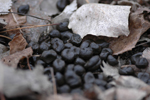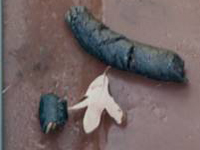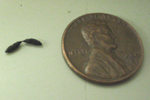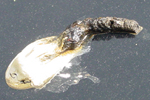Scat & Droppings Identification Key
Identification of feces, or scat, can be a difficult task as feces change according to the animal’s diet. However, by asking the right questions you can go a long way to reduce the number of available suspects.
WARNING: Before you begin to identify scat, consider the health hazards associated it. Be safe. Droppings are dirty and have germs. Avoid handling droppings without proper protection and avoid inhaling near the droppings. If you have to touch droppings, use a tool and/or properly gloved hands. Some diseases may contracted through inhalation of or touching dust-borne particles.
 |
 |
 |
|
| Pellets | Plop | Tubular-Large | |
Ungulates
Rabbits |
|
Canines
Raccoons Felines
Geese-usually green |
|
 |
 |
||
| Tubular-Small | White Feces | ||
Rodents
Bats |
Amphibians
Birds (all varieties) |